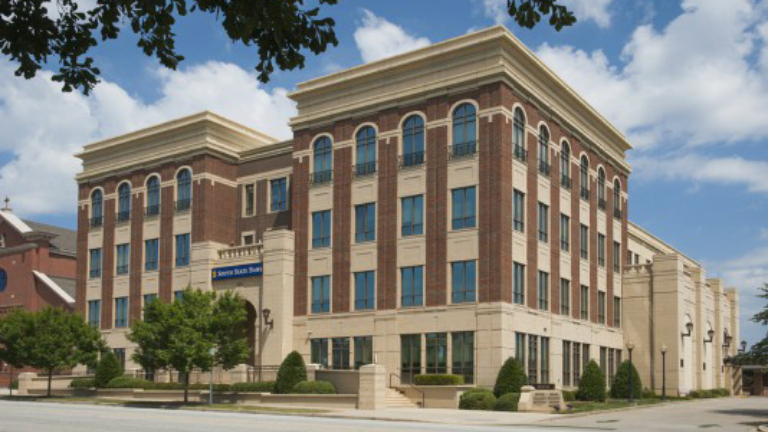Customer Story
Johnson Development Associates
Connected Building Solutions improve visibility and control of building systems; reduce annual energy consumption approximately 15 percent; earn utility rebate of $25,000; provide 1.2 year payback.

Quick Facts
- Industry
- Commercial Real Estate
- Products
- Controls
- Topics
- Efficiency • Cost-Saving • Optimal Comfort
- Services
- Energy Analysis & Monitoring

The Challenge
Johnson Development Associates, Inc. continuously seeks to improve its properties, with tenant comfort and energy savings being key priorities. When higher than expected utility costs per square foot and comfort issues were brought to light by maintenance personnel at two of its similar Spartanburg office buildings, the property manager sought to investigate.
The Solution
Providing visibility into system operations
Having worked with Trane a number of years on its equipment, controls and service, the owner contacted the company to help evaluate their system performance. To gain visibility into building operations, Trane set up an Intelligent Services Building Performance demonstration to log data for a two-month period, and then together with Johnson Development conducted a system-wide assessment.
“These two similar buildings were only a year apart in age, but we were seeing a substantial difference in energy consumption,” said Lori Comer, property manager, Johnson Development Associates. “With the assessment, we were able to see where we were using the most energy, where there might be issues, and where there might be improvement opportunities.”
Identifying savings opportunities
The Trane Intelligent Services team evaluated subsequent Building Performance Reports to identify the potential for energy savings. Trane utilized the Duke Energy Savings program to enter building information and possible energy conservation measures (ECMs), and identified the potential for energy savings and rebates from the utility company. An executive summary was prepared that included the project cost, rebate information and the energy savings opportunities identified by the analytical data from the Building Performance reports. After reviewing the documents, Johnson Development moved forward with the recommended ECMs.
Driving energy performance and improved efficiency
A Trane® BAS R’newal® was implemented to upgrade the existing controls system to the Tracer® SC building automation system (BAS). The BAS R’newal helps to drive energy performance and improve efficiency, without a costly full-system replacement. Using the Web-enabled technologies of the upgraded BAS, facility managers remotely access building systems, including air handlers, VAV boxes and condenser water plant to monitor operations, make temperature and humidity adjustments, change set points, establish schedules and troubleshoot issues.
Implementing energy conservation measures
Building Performance analysis identified several areas for improvement, including failure of an air-conditioning unit and VAV boxes to make setpoint, the need to calibrate cooling tower system pressure transmitters, and a pump and tower system operating 24/7. Using the Tracer SC, issues were addressed and several ECMs were implemented, such as duct static optimization, supply air temperature optimization, cooling tower system optimization and the re-commissioning of critical building sensors and sequences of operation. The Trane and Johnson Development team continue to meet quarterly to review energy savings projects implemented and discuss additional savings opportunities.
“These properties on East Main Street in Spartanburg are Class A office buildings with high quality equipment,” said Comer. “We didn’t need to replace that equipment, but used Building Performance and Tracer SC to monitor systems, analyze potential issues, and make adjustments to improve operations and comfort.”
The Results
A building automation system upgrade combined with Trane Intelligent Services Building Performance is helping Johnson Development fine tune the operation of its two Class A office buildings in Spartanburg, South Carolina. As a result of the upgrade and energy management services, energy savings are exceeding estimates, with the properties in line to reduce energy consumption approximately 15 percent, for an estimated annual savings of $12,700. The ECMs implemented have earned a utility company rebate of $25,000 for the two buildings. Project payback is estimated at 1.2 years.
“We are already realizing energy savings,” said Comer. “But the main benefit is that we now have control of our systems, and have gained visibility to monitor what is going on inside our buildings.”


